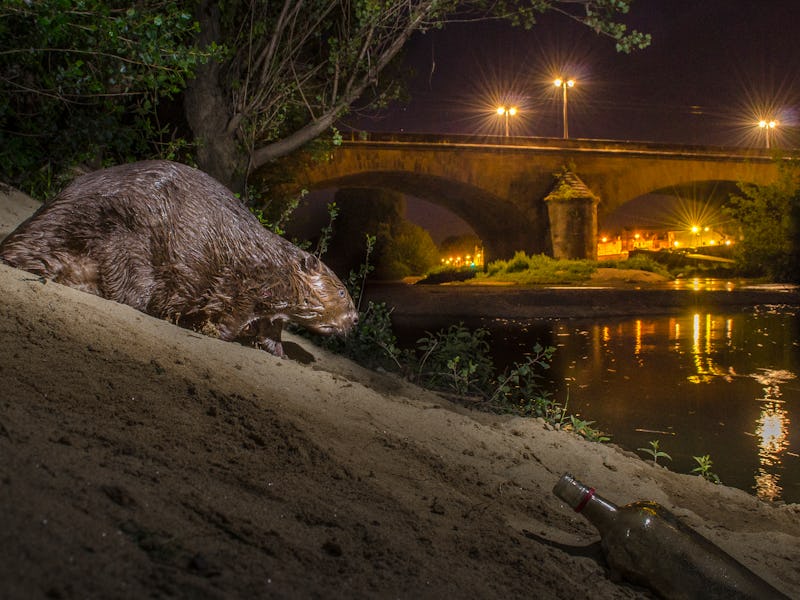Humans Are Scaring Daytime Animals Into Becoming Night Owls, Study Finds
More species are returning to the darkness.

During the time of the dinosaurs, mammalian ancestors crept around at night out of fear that they’d be gobbled up by predators during the day. It wasn’t until most dinos died out 66 million years ago that they were able to make the switch to being day-time animals. Today, many mammals are making the switch back to a nocturnal lifestyle because of another apex predator: humans.
In a study to be published Friday in Science, environmental scientists from the University of California, Berkeley and Boise State University report that human activity is causing mammals worldwide to be more active at night. On average, they write, humans have driven a 20 percent increase in mammal nocturnality.
The advantage of living nocturnally, they explain, is the ability to avoid “human disturbances” — which can be anything from hunting, to hiking, to agriculture. While the nocturnal adaption may appear to be a fix that will allow humans and animals to coexist more peacefully, the scientists note that it may come with severe consequences down the line.
“As the human footprint expands, fewer areas are available for animals to seek spatial refuge from people,” the scientists write. “Here we show that humans, as a diurnal apex ‘super predator’, are driving increases in nocturnal activity across diverse mammalian taxa.”
Wild boar (*Sus scrofa*) looking for food near garbage in Barcelona, Spain.
To quantify and track the daily activity of mammals, the team conducted a large-scale analysis of 76 studies focused on 62 species from six continents. They focused on published studies that tracked the activity of medium- and large-bodied mammals because they best illustrated large space needs, high levels of behavioral plasticity, and potential for conflict with humans. In those previous studies these animals — ranging from the common opossum to the African elephant — had been monitored with GPS trackers and motion-activated cameras, allowing the scientists to determine when they were the most active and when they were being disturbed.
For each species in each study, the team used the “risk ratio” as a measure of the effect of humans on behavior. A positive risk ratio meant that there was a relatively greater degree of nocturnality in response to humans. Overall, higher levels of human disturbance caused nocturnal animal activity to increase by a factor of 1.36, translating to an overall increase of about 20 percent in nocturnality, on average. Eighty-three percent of the 141 animals examined in the study became more nocturnal as their environments were overrun by human activity.
Within that group, there was a slight trend of larger mammals demonstrating a more abrupt switch to nocturnality, “perhaps because they are more likely to be hunted and harassed or because their space needs force them into more frequent contact with people.”
Badger (*Meles meles*) living in a cemetery in South London, United Kingdom.
Forced to share an environment with humans, animals may have found a quick fix by becoming night owls. However, the scientists note that this is nothing more than a band-aid solution: A shift in behavior could damage the health of some species, they write, because they may ultimately be forced to choose avoiding predators over reproduction. In an accompanying paper commenting on the study, Radboud University environmental scientist Ana Benítez-López, Ph.D. writes that, “Eventually, long-term disturbances may result in lower fitness, lower juvenile survival, or lower reproduction rates, with negative consequences at the population level.”
And in the end, an increase in nocturnality could alter the evolutionary path of these animals, leaving those who are most able to switch to a night-time schedule the most likely to survive.